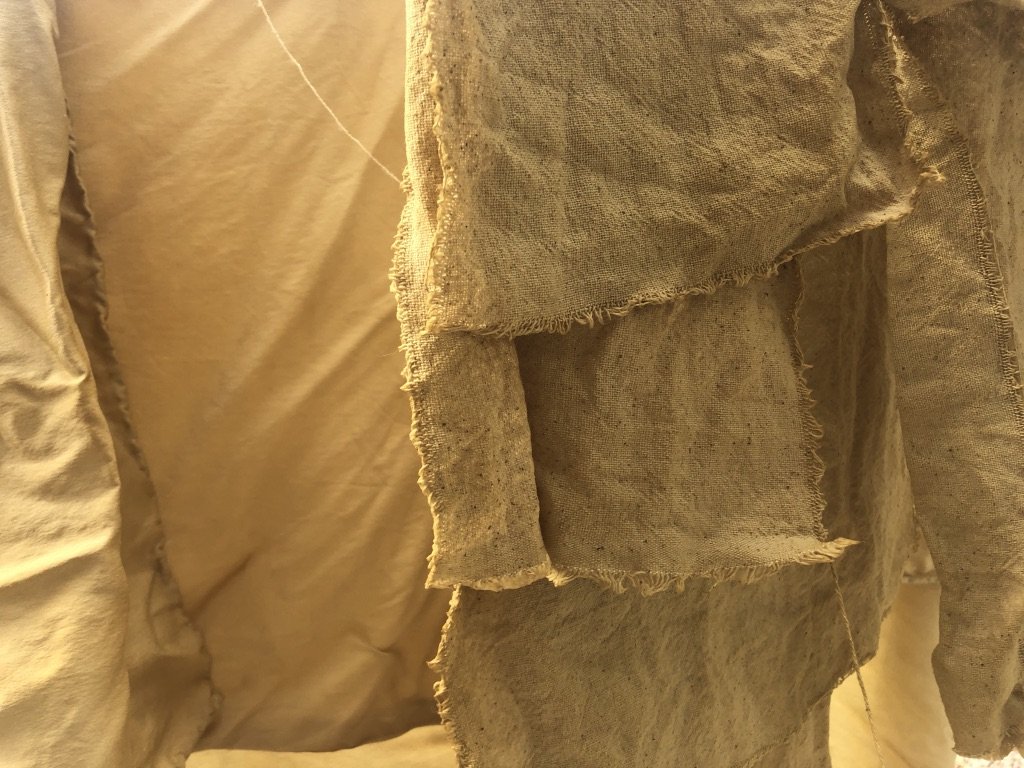As a fiber artist, I have a “seed to art” practice. I create exclusively with natural dyes and pigments. To make my practice sustainable, I grow as many of my materials as possible. I began with cotton seeds and a variety of indigo that is found throughout West Africa. By growing my own plants I am able to ensure that they are appropriate for my climate and culture, honoring the landscape where I live.
Utilizing natural dyes and various fiber techniques (surface design, embroidery, quilting, etc) allows me to explore my identity as a Black woman in the U.S., while reconnecting with my stolen heritage. I tap into a legacy that was maintained for generations, despite colonization. Like many Black Americans my history is unknown; as I piece together my works, I piece together my history. In addition to my handmade textiles, I also utilize embellishments that come directly from various African countries. The mixture of beads, textiles, and techniques are all indicative of the experience of being a Black American. Our lineages have been mixed until they created something new. As they were shipped as cargo, I imagine our ancestors prayed fervently, first for themselves, then for preservation. As they were forced to abandon their cultures, they salvaged what they could in secret. Through my practice I have begun to reclaim their lost prayers.
My work focuses on the ways we as Black Americans continue to preserve the legacy that our ancestors maintained despite everything. By utilizing traditional techniques, I pay homage. I grow ancestral plants, relearning their names and purposes, honoring the stolen sacrifices. My art practice is an exercise in decolonizing the way Black Americans see themselves, how they fit into the American experience, and how they apply the past to build a better future.
BIO
